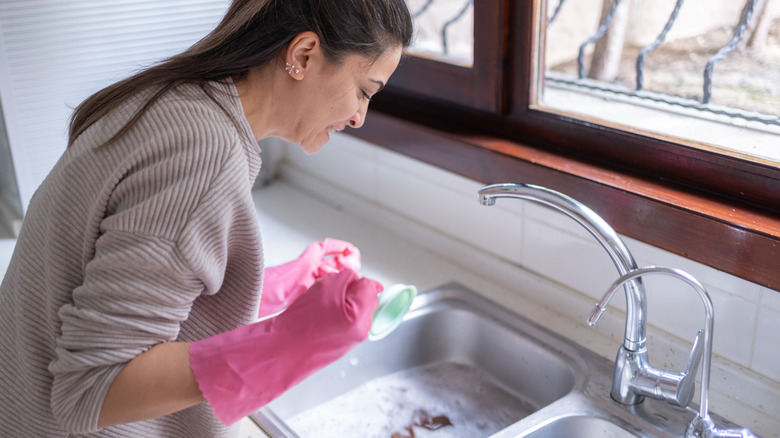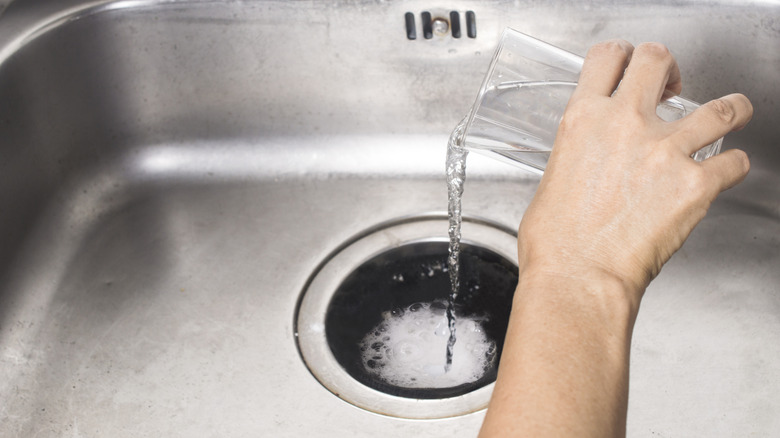The Trick To Fixing A Slow-Draining Sink Is Already In Your Medicine Cabinet
We may receive a commission on purchases made from links.
If you have a sink or tub drain that's partially or completely clogged, it's tempting to try a home solution before calling a plumber. Avoiding the expense of a house call is always a big incentive to take on a little do-it-yourself action. But before you reach for the Drano or another caustic chemical mixture, you may already have all you need in your bathroom cabinet. For instance, little brown bottle that costs only around a dollar may contain the special ingredient to get your drain flowing freely again: hydrogen peroxide.
While there are many ways to unclog a drain, hydrogen peroxide is one of the best because it's all-natural and non-corrosive. Now, if you've never stopped to look into what exactly hydrogen peroxide is — well, it's a colorless, odorless liquid that looks just like water, but contains an extra oxygen molecule (H2O2). That extra oxygen helps it oxidize and disinfect things. Most hydrogen peroxide sold commercially is around a 3%-9% mixture of hydrogen peroxide to water. Anything over 9% could be toxic if inhaled or if it comes in contact with skin and should be avoided for this drain-cleaning DIY.
How does it work to clear a drain? We'll get into that, but first, note that hydrogen peroxide should never be combined with vinegar. This pairing results in a highly corrosive acid that could harm you and your household plumbing. Also remember to never mix anything with bleach. And just to be on the safe side, go ahead and grab your goggles before proceeding.
How to safely unclog drains with hydrogen peroxide
It couldn't be more simple to unclog a drain using hydrogen peroxide. There are two common methods. The first is to simply pour about a cup of hydrogen peroxide and one quart of water down the drain, wait about 30 minutes, and follow it with some hot water. The hydrogen peroxide should have had plenty of time to eat through the organic matter in your drain as it sat.
The second method is to use hydrogen peroxide with baking soda, the tool of oh-so-many uses you never thought of, to get a bubbling reaction. To do this, pour up to one cup of baking soda into your drain. Follow this with about one cup of hydrogen peroxide. Let this solution bubble for as long as possible — at least 30 minutes. Finally, pour hot water down the drain to flush the material out of the pipe.
If it's still not draining smoothly, try repeating the process one more time. If you're still experiencing clogging after that, it may be a solid object blocking the drain and not just organic matter. In this case, it's probably best to call in the experts, hire a plumber, and cough up the money for some plumbing peace of mind.

